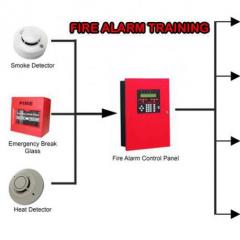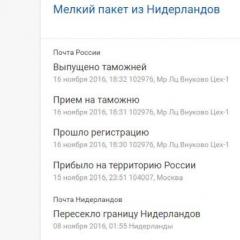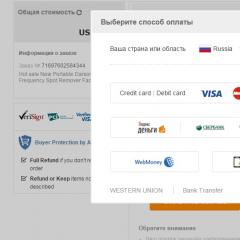Does not see the second partition of the hard drive. The hard drive is not displayed in Windows: a solution to the problem. Lack of SATA driver
Recently, I received a comment in which the user had a problem installing Windows on a PC, it turns out that the installer does not see the hard drive, so it is not clear where to install the system. A little lower in the installer, the cause of the error is described, which tells us that the disk media driver is missing and needs to be loaded.
The problem is common and I want to write a small instruction to help people in solving it. Let's figure it out.
Find hard drive drivers
Modern computers, or rather laptops with an Intel processor, you can find the necessary drivers on their website. To make it easier, you can enter the following in any search engine: "Intel® Rapid Storage Technology (Intel® RST) Driver". In the results, you can search for the necessary drivers for any operating system.
If you have an AMD processor in your laptop, you can search for drivers using the following query: "SATA / RAID driver (or laptop)".
You can find drivers on the Internet if you simply enter the model of your laptop or computer motherboard.
Installing the driver if Windows does not see the hard drive during installation
Next is the most interesting. After you have downloaded the driver, you need to drop it on, in our case, the USB flash drive from which you are going to install Windows. Even if you are using a bootable DVD, put the driver on a flash drive anyway, and then insert it into your computer. Putting the driver on disk will prevent you from installing it properly.
Start downloading from a USB flash drive or disk until the installer appears. Then click on the button.

A window will appear where you need to specify the path to the driver, this is our flash drive, click OK. The driver installation will begin, and then you should see your disks and partitions, if, of course, everything went well.

On a note, I want to say that if you are installing Windows on your computer for the first time, and after installing the drivers, 3 or more partitions appeared in the installer, then you do not need to delete them, format them, and do other actions with them. You can only manipulate the largest section. The fact is that the remaining sections are important, since they store data on that will help.
If you yourself cannot do everything that I wrote here, then contact the specialists and they will be able to fix everything for you for a fee.
There is another option why the Windows installer does not see hard drives, you may need to disable the mode, I have already talked about this mode more than once, for example,. It turns off in . But this option is more suitable for Windows XP.

This, I think, can be finished, I hope that this guide will help you in solving the problem with installing Windows.
Some users sometimes encounter the fact that the system does not see the hard drive, not only connected as an additional device, but also an already installed hard drive, on which the operating system is intended to be loaded. What could be the reason for this and how to fix such a problem? The following are some basic solutions that should help in most cases. True, you first have to find out the true cause of the failure.
Why does the system not see the hard drive?
As the most common reason for such failures, most experts tend to call the incorrect connection of the hard drive with cables to the motherboard. However, even with a correct connection, a situation may arise when, for example, the system does not see a new hard drive, although it is working, the operating system is in full working order, drivers are installed, etc.
This problem most often refers to incorrect BIOS settings (this will be discussed in more detail later). The same situation can be observed in the presence of software failures, when a character already used by the system is assigned to the connected device. Finally, the disk may contain errors, and if this is the hard drive from which the OS is started, the boot records and sectors that need to be restored may be damaged.
Physical Causes and How to Eliminate Them
Resolving the question of why the system does not see a SATA hard drive (we take this device standard only as an example), let's start by considering physical problems.
As it is already clear, you should first check the correct connection and tightness of the loops entering the corresponding connectors. In addition, a very common reason for incorrect HDD operation is overheating of the south bridge, which is more typical for laptops. In this case, first you need to turn off the device and let it cool down.

For stationary units, a possible solution to the problem may be the option of resetting the settings by removing the CMOS battery from the socket for a couple of minutes (complete zeroing of the parameters).

Along the way, you should find a special Clear CMOS jumper on the motherboard, which, as a rule, is located not far from the battery. The jumper must first be switched to position 2-3 for 15 seconds, and then return to the original connection 1-2.
It is also worth paying attention to the correctness of the Master / Slave connections (the position of the jumpers). A hard disk with an IDE interface must have a Master connection, all other devices, including external hard drives or optical disk drives, must have a Slave connection. This, by the way, also applies to situations where the system does not see the second hard drive. But this is far from all the problems.
The system does not see the hard drive: BIOS settings
Another reason that is not recognized is incorrectly set parameters of the BIOS primary I / O system. If during boot the system reports that the system disk is not found and asks to insert it, it is possible that another device is set in boot priority.

In the corresponding section, the HDD should be selected as the priority (first) device for booting. If after that the system does not see the hard drive, you should go to the hard drive settings section and disable AHCI mode in the SATA configuration settings line by setting RAID or Standard IDE as the used parameter.
Disk management section
But let's assume that the main hard drive is recognized and the OS boots without problems. The user connected a second hard drive, but there was no effect. So why does the system not see the external hard drive? There are many reasons for this, one of which is that the wrong letter has been assigned to the disk.

This situation is eliminated simply: we go into computer management, where we use a similar partition for disks. Absolutely all devices will be displayed here, even if they are not recognized at the initial stage of loading or do not work correctly. Select the required disk, right-click to call up the submenu and access the line for changing the letter or path to the disk. After that, we enter an unused value and save the set parameters. You may need to reboot.
Driver Issues
Another problem for many users is the missing or incorrectly installed drivers responsible for the operation of both the installed on the motherboard and the external hard drive.

If the user has a driver disk, which must be included with the purchase, there is no problem. Just install (or reinstall) the drivers. If you don't have such a disk, you can use a free directory or install a program like Driver Booster that will scan for missing, corrupted, or updated drivers and automatically integrate them into your system.
Checking the hard drive and boot record
Finally, the most unpleasant situation is when the operating system from the hard drive does not boot due to software errors or surface damage.

In the first case, you will need any bootable disk (for example, a LiveCD or a system distribution kit), after which you will need to press the "R" key to call and go to the command line, where first with the command chkdsk c: / f / r check the disk for errors, and then write the lines Bootrec.exe /FixMbr and Bootrec.exe /FixBoot (this will fix the boot entries). If this also does not work, you need to rewrite the boot sector using the Bootrec.exe /RebuildBcd command. If the problem was really related to such a situation, after the restart, the download will go in normal mode without failures.
In case of mechanical damage, the hard drive will have to be replaced. Although it is claimed that bad sectors can be restored using the HDD Regenerator program by remagnetizing the disk, this is hard to believe.
Conclusion
Finally, it remains to be said that for cases where the system does not see far from all solutions, since it is simply impossible to foresee all situations. However, all of the above is most common, so depending on the situation, you can apply one or another technique that will eliminate the problem.
Here, problems were not deliberately considered when the hard drive is not detected by the system due to virus exposure (this also occurs), because protecting your own computer should be a priority for any user. Also, issues related to incorrect disk partitioning or formatting were not raised. Well, when the hard drive, as they say, began to “crumble”, there is simply no other solution than replacement.
Many users create partitions on their hard disk - these are drives C, D and further down the list. Unfortunately, one of the most annoying problems that a user may encounter is that the hard disk partition has disappeared and cannot be found.
There is no denying the usefulness of hard drive partitions. For example, you might have an operating system installed on one partition, and a multi-gigabyte movie and music library on the other. When reinstalling the operating system, the partition with user files may not be affected, which means that even the files from the new Windows will remain with you.
Unfortunately, the problem when a hard disk partition suddenly disappears is quite common, and there are also plenty of reasons that can affect the occurrence of this problem.
What to do if a hard disk partition is missing?
The first thing to do is to get into the Disk Management menu and see if the logical partition is displayed in it. If so, then the partition must be assigned a letter.
To do this, call the menu "Control Panel" and then navigate to the section "Administration".

In the window that opens, double-click on the shortcut "Computer Management".

A new window will appear on the screen, in the left area of \u200b\u200bwhich you will need to open the section "Disk Management".

After a moment, the requested information will be displayed on the screen. Look carefully at the disk partitions. If you see your missing partition, it will need to set a new drive letter. To do this, right-click on the section and in the context menu that appears, select "Change Drive Letter or Drive Path".

In the new window, click on the button "Change".

Select the appropriate letter from the list, and then save the changes.

The system will warn you that programs installed on this disk may stop working. If you agree to continue, click on the button "Yes".

Tip 2: Create a new partition and then merge it
The essence of the problem may be that there are still files on the partition, but Windows does not see it, for example, because the file system has been lost. In this case, we will try to use third-party tools that will be able to see the partition, "split" a piece from the partition, creating a new one with the NTFS file system, and then simply merge them.
1. To do this, turn to the help of the program Acronis Disk Director Advanced(download link is at the end of the article). You will need to download this program to your computer, and then create a boot disk or Live-CD flash drive in it.
2. Log in to BIOS. As a rule, for this, at the very early stage of loading, it is necessary to repeatedly press the hot key - F2 or Del.
3. Set a bootable flash drive or disk as the primary boot device. To do this, you need to find the section "First Boot Device"(the name of the section may differ slightly), and then select your USB flash drive or CD-ROM first in the list.
4. Exit BIOS. The computer will start to boot, and subsequently the Acronis Disk Director Advanced window will be displayed on the screen. The utility will display a list of existing partitions, among which, most likely, you will see the partition that Windows does not see.
5. Using the utility tools, you will need to separate a small piece from the partition (several megabytes is enough), setting it to the NTFS file system.
6. When the partition is created, merge this and the problematic partition. Save the changes and then reboot the system by entering the BIOS and set to boot from the hard drive. After exiting the BIOS, the system will boot into Windows. Check the status of the disk partition - it should display correctly.
It can be assumed that it will not work to return the partition, but you can try your luck to restore the files contained in it. In our task, again, the Acronis Disk Director Advanced utility will help us.
1. Follow the steps described in the last tip, from the first point to the fourth.
2. In the Acronis Disk Director Advanced menu, open the section "Partition Recovery", then select the disk with which further work will be performed and follow the instructions of the program.
Please note that the procedure for restoring files from a partition can take quite a long time (it all depends on the number of files contained on the disk). Therefore, be prepared for the fact that the computer will have to work for a long time.
4. After completing the recovery procedure, exit the Live-CD and boot your Windows computer.
We hope that these easy-to-follow recommendations helped you solve the problem with displaying the section. Also, if you have your own troubleshooting experience, please share it in the comments.



